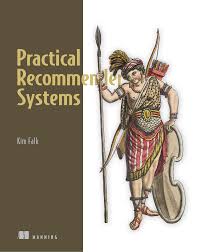Practical Recommender Systems: A White Paper
Abstract
Recommender systems have become an integral part of modern online platforms, enhancing user experience and driving business growth. This white paper provides an overview of key techniques, challenges, and best practices in building effective recommender systems. We delve into popular approaches such as collaborative filtering, content-based filtering, and hybrid approaches, along with their strengths, weaknesses, and real-world applications. Additionally, we discuss the importance of data quality, evaluation metrics, and ethical considerations in deploying recommender systems.
1. Introduction
Recommender systems are algorithms that suggest relevant items to users based on their past behavior, preferences, or contextual information. They have revolutionized various industries, including e-commerce, entertainment, and social media. By personalizing user experiences, these systems increase customer satisfaction, engagement, and ultimately, revenue.
2. Key Techniques
2.1 Collaborative Filtering
Collaborative filtering is a technique that recommends items based on the similarity of user preferences or item characteristics. It can be further categorized into:
- User-based Collaborative Filtering: Recommends items to a user based on the ratings or preferences of similar users.
- Item-based Collaborative Filtering: Recommends items to a user based on their similarity to items the user has previously rated or purchased.
2.2 Content-Based Filtering
Content-based filtering recommends items to a user based on their descriptions and attributes. It analyzes the content of items and identifies similar items to recommend.
2.3 Hybrid Approaches
Hybrid approaches combine collaborative filtering and content-based filtering techniques to leverage the strengths of both. This approach can often lead to more accurate and personalized recommendations.
3. Challenges and Considerations
3.1 Data Sparsity
- Cold-start problem: Difficulty in recommending items to new users with limited interaction history.
- Data sparsity: Lack of sufficient user-item interaction data.
3.2 Scalability
- Handling large datasets and real-time recommendations.
3.3 Ethical Considerations
- Privacy: Protecting user privacy and avoiding biases in recommendations.
- Filter bubbles: The risk of users being exposed only to content that aligns with their existing beliefs.
4. Evaluation Metrics
- Precision: The proportion of recommended items that are relevant.
- Recall: The proportion of relevant items that are recommended.
- F1-score: The harmonic mean of precision and recall.
- Mean Average Precision (MAP): Measures the average precision at each relevant item.
- Mean Reciprocal Rank (MRR): Measures the average reciprocal rank of the first relevant item.
5. Real-world Applications
- E-commerce: Product recommendations, personalized offers.
- Entertainment: Movie and music recommendations, personalized playlists.
- Social Media: Friend suggestions, content recommendations.
- News and Content Aggregators: Personalized news feeds.
6. Future Directions
- Contextual Recommendations: Incorporating contextual information like location, time, and user mood.
- Deep Learning: Leveraging deep learning techniques for more sophisticated recommendation models.
- Explainable AI: Providing transparent explanations for recommendations to build trust.
References
- Ricci, F., Rokach, L., Shapira, B., & Kantor, P. B. (2011). Recommender systems handbook. Springer.
- Adomavicius, G., & Tuzhilin, A. (2005). Toward personalized recommendations: A survey of approaches and techniques. ACM Transactions on Information Systems (TOIS), 23(1), 6.
- Koren, Y., Bell, R., & Volinsky, C. (2009). Matrix factorization techniques for recommender systems. Computer, 42(8), 30-37.
- Rendle, S., Freudenthaler, C., Gantner, Z., & Schmidt-Thieme, L. (2009). BPR: Bayesian personalized ranking from implicit feedback. In Proceedings of the 25th conference on (pp. 452-459). AUAI Press.
[Insert Additional References as Needed]
By understanding the fundamental concepts, challenges, and best practices outlined in this white paper, organizations can build effective recommender systems that drive user engagement and business growth.
[Optional: Add specific case studies, diagrams, or code examples to further enhance the white paper]
Note: To create a comprehensive white paper, consider consulting with domain experts and incorporating their insights. You may also want to delve deeper into specific techniques, such as deep learning-based approaches or reinforcement learning.
I hope this white paper provides a solid foundation for your exploration of recommender systems.



